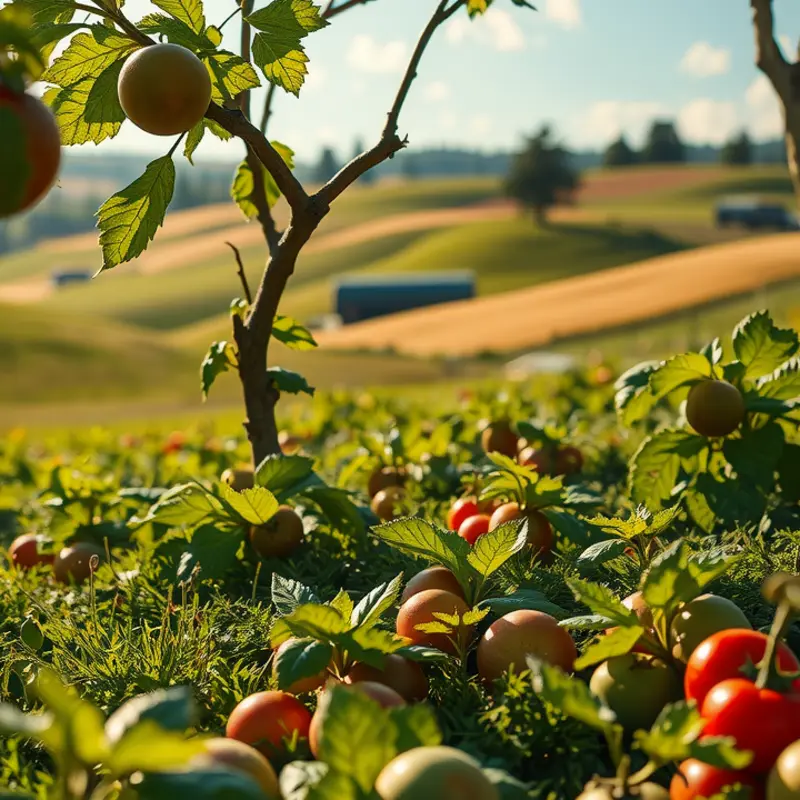Vegan carb cycling is emerging as a popular method for optimizing nutrition while adhering to plant-based principles. This approach allows individuals to leverage carbohydrates for energy and performance without sacrificing their commitment to veganism. Understanding how to effectively implement this strategy can help you enhance your fitness goals without feeling deprived of delicious plant-based foods. Let’s explore how to balance your carbohydrate intake in a vegan context, providing you clarity and actionable insights.
The Basics of Carb Cycling

Carb cycling is an intriguing dietary strategy that involves alternating carbohydrate intake, typically varying between high and low carb days. This rhythmic adjustment can help optimize how your body utilizes fuel, maintain metabolic flexibility, and potentially support various fitness goals. Understanding carbohydrates’ pivotal role in our diet is crucial, as they are the body’s primary energy source, necessary for both brain function and muscular activity.
Carbohydrates, especially those derived from whole plant-based foods, provide essential nutrients and energy. When integrated into a vegan diet, these carbs include grains, legumes, fruits, and vegetables. The premise of carb cycling is to harness the benefits of high carb days to fuel workouts, enhance recovery, and boost glycogen stores, while low carb days may promote fat oxidation and improve insulin sensitivity.
In a plant-based context, carb cycling requires careful planning to ensure you meet your nutritional needs without relying on animal-based products. On high carb days, focus on complex carbohydrates like quinoa, oats, sweet potatoes, and whole grain pasta. These foods digest slowly, leading to sustained energy release. Coupling them with protein sources like lentils or chickpeas can be particularly beneficial. On low carb days, aim to emphasize protein and healthy fats, reducing carbs but maintaining energy levels with foods like tofu, tempeh, avocados, and nuts.
The science behind carb cycling is rooted in its potential benefits for body composition and metabolic health. High carb days can replenish glycogen stores, aiding in better performance and recovery during subsequent workouts. Conversely, low carb days might encourage the body to utilize fat as a fuel source more efficiently, which could be advantageous for weight management and overall metabolic health.
Implementing carb cycling effectively requires a measured approach. Begin by deciding the frequency of high and low carb days based on your activity levels and personal goals. For instance, you might choose higher carb intake on days with intensive workouts and lower carb intake during rest or light activity days. This balance ensures that you’re fueling your body adequately for performance while promoting metabolic adaptations.
Hydration and eating patterns also play a significant role in the success of a carb cycling routine. Pair carb cycling with hydration strategies and schedule your meal times to align with workout intensities for optimal performance and recovery (learn more about healthy eating strategies here).
Carb cycling, when carefully planned, can be a valuable tool within a vegan diet to not only meet but also exceed nutritional needs. By understanding and applying these principles, you can better tailor your plant-based lifestyle to align with your fitness and health objectives. As you navigate this nutritional strategy, remain attentive to how your body responds and be prepared to make adjustments for personalized success.
Implementing Vegan Carb Cycling

Adopting a vegan carb cycling approach requires thoughtful planning to ensure dietary balance. Start by crafting a meal plan that aligns with carb cycling’s alternating high and low carbohydrate days. This provides a solid framework for sustained energy and optimal nutritional intake.
Meal Planning Strategies
Begin by scheduling your high-carb and low-carb days based on activity levels. Plan high-carb days on days with intense workouts, and low-carb days during rest or light activity. This synchronization promotes muscle recovery and aids in fat usage.
Nutrient-Dense Carbohydrates
Select whole, minimally processed carbs to maximize nutrient intake. Quinoa, sweet potatoes, and brown rice are excellent choices for high-carb days, offering dietary fiber and essential nutrients. On low-carb days, opt for vegetables such as spinach, zucchini, and cauliflower to keep carb levels controlled while maintaining necessary vitamins and minerals.
Diverse Plant-Based Proteins
Incorporating a variety of plant-based proteins is crucial. Lentils, chickpeas, and tofu can be tailored to both high and low-carb days, providing necessary protein and promoting satiety. Using a combination of these ensures a spectrum of amino acids, supporting muscle repair and growth.
Incorporating Healthy Fats
Healthy fats play a vital role in any balanced diet. On low-carb days, focus on foods high in unsaturated fats—like avocados, nuts, and seeds—to fulfill caloric intake and sustain energy. This approach aids in reducing the risk of nutrient deficiencies.
Sample Meals for High-Carb Days
Starting with breakfast, a bowl of oatmeal topped with fresh berries and chia seeds is nourishing and carb-rich. Lunch could include a quinoa salad with an array of vegetables and a tahini dressing. For dinner, a hearty lentil and sweet potato stew rounds out a balanced day.
Sample Meals for Low-Carb Days
For breakfast, a tofu scramble with spinach and bell peppers provides protein and healthy fats. Lunch might consist of a large salad with mixed greens, avocado, and hemp seeds. Dinner options include a cauliflower rice stir-fry with broccoli, edamame, and pumpkin seeds.
Balanced, nutrient-rich meals are the cornerstone of vegan carb cycling. By integrating these practical steps, a plant-based diet can be both strategic and enjoyable. To learn more about meal prepping effectively, check out these practical ingredient batching tips.
Final words
Incorporating vegan carb cycling into your lifestyle can seem challenging at first, but with a clear understanding of the principles and a practical approach, it becomes an enriching experience. By mastering the art of cycling your carbohydrate intake, you can enhance your physical performance while enjoying the vivid flavors of plant-based foods. Remember, the key lies in personalization; tailor your carb cycling strategy to best fit your individual needs and preferences. With careful planning, you can nourish your body, support your fitness goals, and revel in the abundance of a vegan diet.








